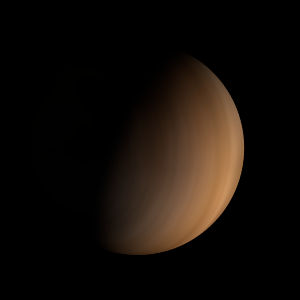|
|
Space Astro
|
Info for exoplanet "Laspho"
| Scientific (actual) data |
|---|
| Name | ZTF J2252-05 b |
| Planet status | Confirmed |
| Planet mass | 26 |
| Radius | 0.49 |
| Orbital period | 0.024 |
| Inclination | 87 |
| Discovered | 2021 |
| Updated | 2024-06-16 |
| Publication | Published in a refereed paper |
| Detection type | Primary Transit |
| Mass measurement type | Theoretical |
| Alternate names | PB 7296 b |
| Star name | ZTF J2252-05 |
| Right ascension | 343.15° |
| Declination | -5.32° |
| Star distance | 536 |
| Star mass | 0.76 |
| Star radius | 0.01 |
| Star sp type | DA |
| Star temperature | 15200 |
| Star alternate names | PB 7296, Gaia DR3 2612053222273626752 |
| Wikipedia article | ZTF J2252-05 b |
Back
| |
| Fictional info (?) |
|---|
| Suggested name | Laspho |
| Planet type | Huge cold gas giant |
| As seen relative to the fixed stars, it rotates on its axis exactly five times for every four revolutions it makes around ZTF J2252-05.
Having almost no atmosphere to retain heat, it has surface temperatures that vary diurnally more than on any other planet in its solar system, ranging from 145°K (-128°C) at night to 945°K (672°C) during the day across the equatorial regions.
The two polar ice caps appear to be made largely of sand. |
| Atmosphere | Ethane | 57% |
| Ammonium hydrosulfide (NH4SH) | 25% |
| Xenon | 12% |
| Molecular hydrogen | 3.6% |
| Hydrogen chloride | 2.2% |
| Hydrogen | 0.12% |
| Ammonia | 0.014% |
| Carbonyl sulfide | 0.0004% |
| Argon | 6.4E-5% |
| Atmospheric pressure | 0.001 bar |
 |
| No known satellites |
| Google search for Laspho |
|
Website by Joachim Michaelis
|
|
|
|